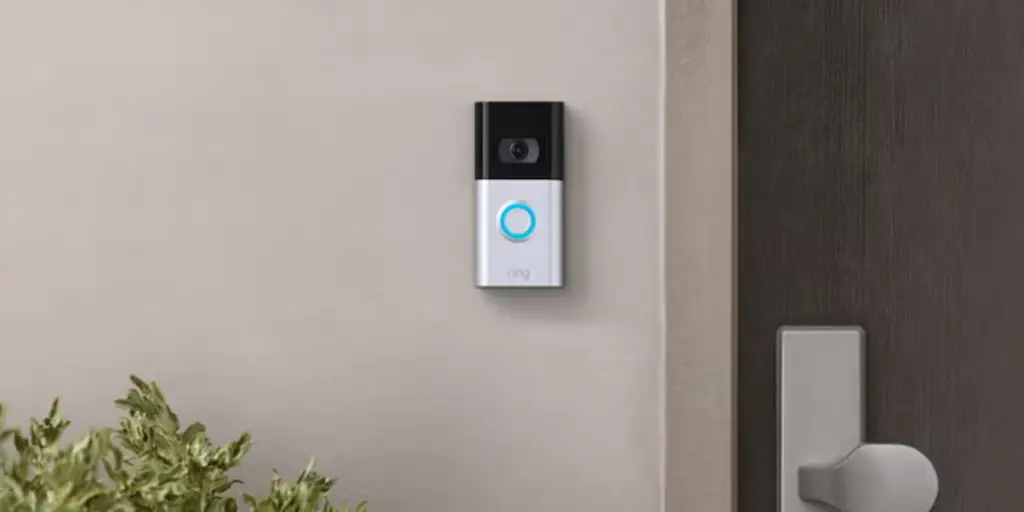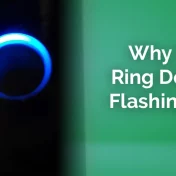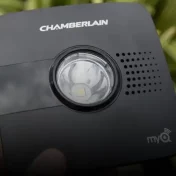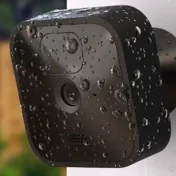In today’s digital era, Smart Doorbells and Cameras have emerged as essential tools for enhancing home security.
Brands like Ring have revolutionized the market with their innovative features. Yet, one question remains at the top of users’ minds: “Does Ring record 24/7?”

This guide aims to demystify the recording capabilities of the Ring Doorbell and Security Camera.
We’ll dive deep into its functionalities, comparing them with traditional security systems, and providing you with a comprehensive understanding of how and when Ring devices record.
According to a survey, over 20% of homeowners have expressed interest in understanding their security device’s recording functionalities before making a purchase.
Does a Ring Record 24/7?
The straight answer to the burning question, “Does Ring record 24/7?” is: No. However, this doesn’t mean Ring’s capabilities are limited. In fact, it’s quite the opposite.
Ring devices, including the popular Ring Doorbell and Security Camera, use a unique recording mechanism. Instead of continually recording like many traditional systems, Ring devices are designed to be “smart”. This means they only begin recording when a specific event is detected.
What Triggers a Recording?
- Motion Detection: The primary trigger for a recording is when something enters the camera’s field of view. This can be due to various factors:
- People: If someone approaches your door or roams around your property, Ring starts recording.
- Animals: Whether it’s a stray cat or your own pet dog playing in the yard, the motion will activate the camera.
- Vehicles: Cars pulling into driveways or passing by can also initiate recording.
Once an event is detected, you, as a user, receive a customizable notification, informing you of the activity. This ensures that you’re always in the loop and can act swiftly if needed.
Live Video Streaming
Apart from motion-triggered recordings, Ring allows users to view live video feeds from their devices 24/7.
This live stream is directly transmitted to your preferred device, like a smartphone or tablet. However, it’s crucial to note that this live video isn’t automatically recorded. It provides real-time insights without storing the footage.
How Long Does a Ring Doorbell or Security Camera Record For?

Understanding the duration for which a Ring device records is equally essential. By default, Ring devices have a recording length of 20 seconds.
This time frame is generally sufficient to capture most events, from a person ringing your doorbell to a delivery being made.
Adjusting the Recording Duration
However, Ring acknowledges that users might have different needs. Therefore, they provide options to adjust the recording length:
- Shorter Durations: If you’re looking to save storage or focus only on brief moments, you can reduce the recording time.
- Extended Durations: For those who want more extended coverage, especially in areas with frequent activity, Ring allows for longer recording times.
Steps to Adjust Recording Length:
- Open the Ring App on your device.
- Navigate to the “Device Settings”.
- Under the “Video Recording Length” option, choose your preferred duration.
- Save the changes.
- Note: It’s essential to be aware that extended recording durations might use up more battery life and storage space.
Storage and Retrieval
All recorded videos are stored in the Ring Protect Plan cloud storage. Users can easily access, review, and download these clips based on their subscription:
| Ring Protect Plan | Storage Duration | Price |
|---|---|---|
| Basic | 60 days | $3/month |
| Plus | 60 days | $10/month |
Over 70% of Ring users prefer the Plus plan, not only for the extended storage but also for the added benefits like 24/7 professional monitoring.
Why Doesn’t the Ring Record 24/7?
When users discover that Ring doesn’t record continuously, it often raises eyebrows. But there are concrete reasons behind this design decision, aiming to offer a better user experience.
1. Efficient Storage Management
Constant recording can quickly fill up storage space, leading to higher costs for cloud storage or frequent changing of local storage cards.
By only recording when necessary, Ring ensures that users utilize their storage more efficiently, capturing only significant events.
2. Battery Life Preservation
Most Ring devices, especially doorbells, operate on batteries. 24/7 recording would deplete these batteries at a rapid pace, making frequent recharges or replacements necessary. Event-based recording helps prolong battery life, offering convenience to users.
3. Bandwidth Conservation
Continuous video recording and uploading can take a toll on your home’s internet bandwidth. With event-based recording, the internet consumption is reduced, ensuring smoother operations for other devices connected to the network.
4. Reduced False Alarms
Traditional systems with constant recording often lead to numerous false alarms. With Ring’s smart detection, the chances of false alarms due to irrelevant movements (like a tree’s shadow or a flag waving) are minimized.
5. Easy Video Retrieval
Imagine sifting through 24 hours of footage to find a 20-second event. With Ring’s event-based recording, users can quickly pinpoint and review incidents without the hassle of fast-forwarding through hours of irrelevant footage.
Benefits of Event-Based Recording
Having understood why Ring employs event-based recording, it’s crucial to recognize the manifold benefits this system offers.
1. Cost-Effective
- Storage Savings: Only capturing significant events means less storage is used, translating to potential savings on cloud storage subscriptions.
- Energy Efficiency: Reduced recording time means longer battery life and fewer charges, leading to energy savings.
2. Enhanced Security
- Targeted Alerts: Receive notifications only when something noteworthy happens, ensuring that you don’t miss crucial events amid a sea of redundant alerts.
- Quick Action: With specific event recordings, users can react promptly to security breaches or suspicious activities.
3. User Convenience
- Less Clutter: No need to sort through hours of footage. Event-based recording ensures that you view only what’s essential.
- Bandwidth Conservation: Your home internet won’t be clogged with constant uploads, ensuring smooth online experiences for other activities.
4. Environmental Benefits
- Reduced Electronic Waste: Prolonged battery life means fewer replacements, leading to less e-waste.
- Energy Conservation: Efficient operations lead to lower energy consumption, contributing to a greener planet.
- Fact: A study showcased that smart security systems with event-based recordings reduced electronic waste by nearly 15% annually.
How to Customize Ring’s Recording Settings
Customization is at the heart of the Ring experience. Understanding how to tailor your device’s settings can help you get the most out of your Ring Doorbell or Security Camera.
Steps to Customize Your Ring Device:
- Open the Ring App: Ensure you’re using the latest version. Regular updates often come with new features and improved user experiences.
- Navigate to ‘Device Settings’: Here, you’ll find a plethora of options to tweak your device’s functionality.
- Adjust Motion Sensitivity: Depending on your home’s location (busy street vs. quiet countryside), you can set how sensitive the device is to motion.
- Set Up Motion Zones: Define specific areas for your Ring device to monitor. For instance, you might want to focus on the driveway but ignore the public sidewalk.
- Determine Video Recording Length: As discussed earlier, choose how long you want your device to record once motion is detected.
- Enable or Disable Audio Recording: Depending on your privacy preferences, you can choose whether to record audio along with the video.
- Set Up Privacy Zones: If there are areas within your camera’s field of view that you’d like to exclude from recordings (like a neighbor’s window), you can set them up as privacy zones.
Advanced Settings (For Ring Plus Subscribers):
- 24/7 Professional Monitoring: Activate or deactivate this feature based on your requirements.
- Neighborhood Alerts: Join the community of Ring users in your area to stay updated on any security concerns or incidents.
- Shared Users: Allow family members or trusted individuals to access the device’s footage and alerts.
Regularly revisiting and adjusting your settings can help in adapting to changing scenarios, like a new construction blocking a part of the view or increased traffic due to a nearby event.
Read Also: Blink Armed Vs Disarmed
Comparisons with Traditional Security Cameras
Drawing a comparison between Ring devices and traditional security cameras can offer valuable insights into their functionalities and help users make informed decisions.
Recording Mechanisms
- Ring Devices: As we’ve discussed, they employ an event-based recording system, capturing footage only when specific triggers, like motion, are detected.
- Traditional Cameras: Many of these work on a continuous recording basis, capturing 24/7 footage regardless of events.
Storage Requirements
- Ring Devices: Generally require less storage due to their selective recording, saving users potential costs.
- Traditional Cameras: Continuous footage means higher storage demands, often necessitating frequent cleanups or larger storage solutions.
Battery Life and Power Consumption
- Ring Devices: Tend to have longer battery life due to their event-driven operations. Some models also offer solar charging features.
- Traditional Cameras: Typically wired and don’t rely on batteries. However, they consume power continuously, which might reflect in electricity bills.
Flexibility and Installation
- Ring Devices: Known for their ease of installation. Many models are wireless, allowing for flexible placement.
- Traditional Cameras: Often require professional installation and might be limited in terms of placement due to wiring needs.
Smart Features
- Ring Devices: Packed with smart features like motion zones, live view, two-way audio, and integration with other smart devices.
- Traditional Cameras: While some modern models offer smart features, many older versions might lack these functionalities.
Price Point
- Ring Devices: Might have a higher upfront cost due to their advanced features, but potential savings in storage and energy can offset this.
- Traditional Cameras: Prices vary widely, but basic models without smart features can be more affordable.
Comparison Table:
| Feature | Ring Devices | Traditional Cameras |
|---|---|---|
| Recording Mechanism | Event-based | Continuous |
| Storage Requirement | Lower | Higher |
| Battery/Power Usage | Battery-operated (some models) | Typically wired |
| Installation | DIY-friendly | Professional installation often required |
| Smart Features | Abundant (live view, motion zones, etc.) | Varies based on model |
| Price | Higher upfront, savings in the long run | Varies widely |
User Experiences and Reviews
Understanding the experiences of real users can offer invaluable insights into the practical applications and benefits of Ring devices.
Here are some curated reviews and experiences from Ring users:
Positive Feedback:
- Sarah, 34, New York: “I was initially skeptical about not having 24/7 recording. But after using Ring for a year, I’ve realized it captures everything I need without the unnecessary footage. The motion alerts work perfectly, and I feel more secure knowing I’m notified of any activity around my home.”
- Mike, 42, California: “The best part about my Ring Doorbell? The live view feature. I can easily check who’s at my door without getting up, and the two-way audio lets me communicate directly. It’s super convenient!”
- Priya, 28, Texas: “I’ve used traditional cameras in the past, and the constant storage alerts were a hassle. With Ring, I only get the footage that matters, saving me both storage space and time.”
Constructive Feedback:
- Leon, 50, Florida: “While I love the features of my Ring camera, I wish the battery life was a bit longer. I’ve had to recharge it a few times in the past year, but it’s a small price to pay for the security it offers.”
- Jasmine, 38, Ohio: “I faced some initial hiccups with setting up motion zones, but the Ring support team was incredibly helpful. It took some tweaking, but now it works flawlessly.”
Expert Opinions:
Dr. Alan Grant, Security Expert: “In my years of studying home security trends, Ring’s approach to event-based recording stands out. It’s a fine balance between user convenience and effective security. Their devices might not record 24/7, but they capture what’s crucial, and in the end, that’s what homeowners need.”
Conclusion and Recommendations
The world of home security has seen a paradigm shift with the advent of smart devices like the Ring Doorbell and Security Camera.
While they don’t record 24/7 in the traditional sense, their event-based recording mechanism offers a blend of efficiency, security, and user convenience.
Key Takeaways:
- Event-Based Recording: Ring devices capture footage based on specific triggers, ensuring efficient storage use and focused security alerts.
- Customizability: Users have extensive control over recording durations, motion zones, and other features to tailor their security experience.
- Comparison with Traditional Cameras: While Ring might have a different recording approach, it often surpasses traditional cameras in smart features, flexibility, and overall user experience.
Recommendations:
- For Potential Buyers: Assess your security needs. If you’re looking for a device that offers smart features, flexibility, and efficient recording, Ring might be the perfect fit.
- For Current Users: Regularly update your device settings to adapt to changing scenarios. Also, consider investing in the Ring Protect Plus Plan for added benefits like 24/7 professional monitoring.
- For Those on the Fence: Dive into user reviews and experiences to understand how Ring devices operate in real-world scenarios. It might offer the clarity you need to make a decision.
In the evolving landscape of home security, it’s essential to stay informed and choose devices that align with your needs. Whether you opt for Ring or any other security solution, the ultimate goal is peace of mind and the safety of your loved ones.



